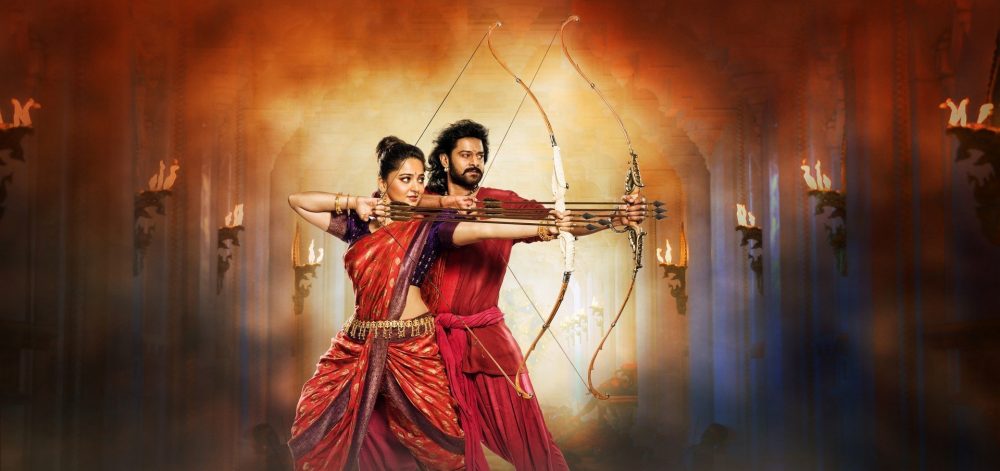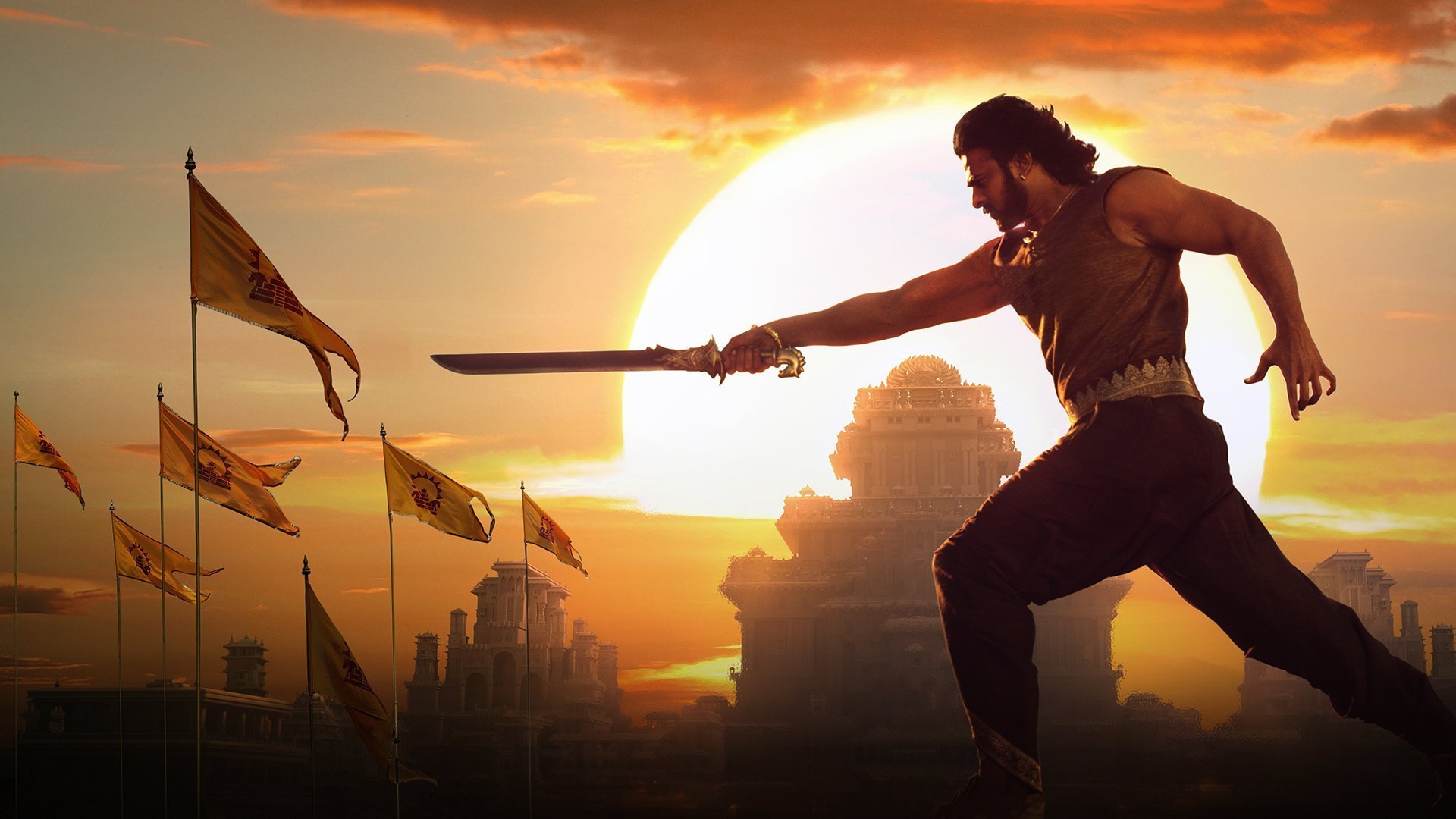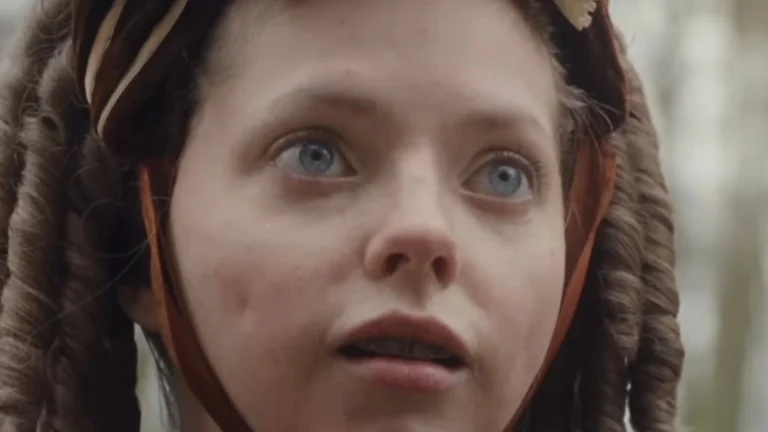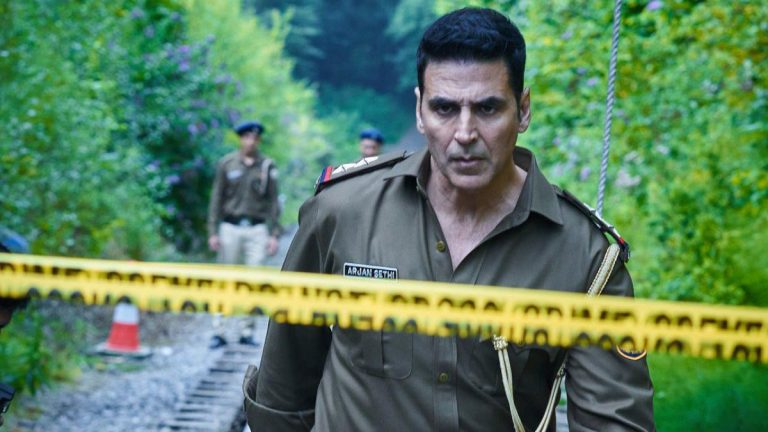Recently re-released as a single, 3-hour-and-45-minute feature, Baahubali once again brings audiences back to the spectacle that once gripped an entire nation. When it was first released, Rajamouli’s two-part saga ignited a wave of excitement that few Indian films had ever seen, altering how audiences and studios imagined scale in mainstream cinema.
In 2007, director S.S. Rajamouli, working in Telugu cinema, began experimenting boldly on the big screen. The result was “Yamadonga,” a fantasy drama centered around Yama, the God of Death, and a spirit in hell. It’s a film that showcased breathtaking visual effects for its time.
The creation of “Magadheera” (2009) and “Eega/Naan Ee” (2012) made it clear that he was pursuing a profound sense of reconciliation, aiming to deliver a spectacular and completely satisfying visual experience. Until then, Rajamouli’s filmography consisted of movies that fit the definition of action-packed comedies sprinkled with emotionally manipulative drama to make the audience root for the protagonists, even when they are morally ambiguous.
Also Read, Baahubali (2015): A Flawed and Cheesy Epic Saga
“Vikramarkudu” was remade in Tamil, with Karthi as “Siruthai,” and in Hindi as “Rowdy Rathore” starring Akshay Kumar. Buster Keaton’s “Our Hospitality,” which Roger Ebert considered Keaton’s first masterpiece, was adapted as Maryada Ramanna in Telugu, under Rajamouli’s direction, and was then remade into “Son of Sardar,” starring Ajay Devgn, and into many other regional languages.
While these films of Rajamouli were savored in the regional areas and received well for a short period, they didn’t aim for an epic status until “Magadheera” arrived, starring Ram Charan. “Magadheera” brought richness to the silver screen with meticulous efforts, from designing delightful visuals to choosing the perfect cast. And with “Eega/Naan Ee,” Rajamouli has outdone himself, bringing the lavishness to the big screen once again. The phenomenal visual effects, utterly defined, completely sold the audience on the believability of a fly’s involvement in the revenge plot.

When news of Baahubali’s development first surfaced, expectations among cinema lovers soared. Rajamouli had already proven through Magadheera and Eega that he could deliver grand, emotionally charged spectacles that pushed the boundaries of visual storytelling. It is the name that has been constantly reverberating in our ears since the movie arrived in Indian cinema in 2015. Had there not been a film franchise like this before, with a budget of 4.3-4.5 billion rupees? A resounding No!
When the first trailer for Baahubali: The Beginning dropped, it created an unprecedented buzz — captivating even those who rarely followed movies. S.S. Rajamouli was the name on everyone’s lips at the time. His previous works, like “Magadheera” and “Eega,” had excited his fans to expect something in “Baahubali” that they hadn’t seen before on the big screen. And when the big day came, “Baahubali” didn’t fail to fulfill its promises. Its stunning visual effects and spellbinding narration amazed the audience and tied them to their seats.
The uninhibited experience of watching the film thrilled audiences, presenting a work of art where imagination was translated to the big screen with utmost precision. When news of a prospective sequel reached them, anticipation turned to feverish trepidation. For two full years leading up to the 2017 release of “Baahubali: The Conclusion,” the franchise dominated social conversation, centered on the burning question: “Why Did Kattappa Kill Baahubali?”
When a film like “Baahubali,” a fictional period fantasy drama, dazzles audiences after they are commonly served with guileless films as dull as a bland meal, they are left with an irresistible urge to delve into its plot and analyze the filmmaking. They want to get into the Director’s headspace and look for his inspiration. They want to dissect the storyline to know what makes the film so sophisticated.
When Director Rajamouli let the fans know that “Ramayana” and “Mahabharatha,” the two great epics of India, inspired “Baahubali,” it genuinely struck the audience with an infectious enthusiasm to see the magic come alive on screen. The visual effects in Baahubali rival Hollywood’s standards in scale and sophistication. Yet beyond its dazzling spectacle, the film offers surprisingly little in terms of narrative depth.
At its core, Baahubali is a tale of sibling rivalry — a brother’s downfall driven by jealousy, pride, and familial discord. One dies not because of fate or moral tragedy, but because his mother and wife cannot see eye to eye, and his brother cannot bear his happiness. The story loses its emotional weight when such melodrama is wrapped in ornamental grandeur.
Baahubali 2: The Conclusion delivered one of the most staggering openings in the history of Indian cinema — a feat few filmmakers could dream of. Its magnificence once again left audiences in awe, and the visual effects surpassed even the first film’s achievements. Despite the rise of digital streaming and piracy, Baahubali drew massive crowds to theaters, proving that Rajamouli had set a new standard for cinematic spectacle — a feast for the senses that audiences had long been craving.

If we look beyond the film’s visual spectacle, Baahubali begins to falter. The enormous technical effort and production grandeur often mask the weakness of its narrative foundation. This is where the plot wobbles. Devasena, a resilient woman who endures immense suffering, rarely falters in her resolve — yet her arc feels abruptly diminished, offering little emotional resonance in the end. The pain of her story scarcely leaves a mark. Consider Broomhilda from Tarantino’s Django Unchained: her brief confinement in a cage is enough to strike a lasting emotional blow. In contrast, Baahubali’s depiction of Devasena’s ordeal, though prolonged, never reaches that same depth of pathos.
Ballaladeva, the jealous brother consumed by his inferiority complex, remains static throughout. Even when Baahubali places implicit trust in him, Ballaladeva’s envy never wavers. He is crafted as a composite of mythic antagonists — part Duryodhana from the Mahabharata, whose resentment of the Pandavas is stoked by his scheming uncle Shakuni, and part Ravana from the Ramayana, whose pride and desire lead to his downfall.
Like Duryodhana, Ballaladeva’s father, Bijjaladeva, becomes the Shakuni-like figure, feeding his son’s hatred and ambition. Just as Ravana holds Sita captive, Ballaladeva imprisons Devasena. Yet Rajamouli doesn’t portray her merely as a passive Sita; he imbues her with the fiery spirit of Draupadi, whose righteous fury demands justice.
Must-Read: The Reincarnation of Indian Cinema
With its multitude of characters, Baahubali avoids true complexity and settles into predictability. At first, Sivagami appears to be a commanding figure, poised to carry the moral weight of the story. Yet by the end, her development feels disappointingly shallow. We expect her to be the Bhishma of the tale — a pillar of strength and conviction — but she instead resembles Gandhari, who blindfolds herself to injustice.
Avanthika, introduced as a fierce warrior, is reduced to a shadow of herself by the film’s conclusion. Initially reminiscent of Shikhandi from the Mahabharata — a character born to fight — she is gradually softened into a passive figure, shaped more by the film’s need to highlight her femininity than her valor.
Ultimately, Baahubali becomes a film where male characters assert their machismo while the women serve merely as catalysts for their journeys. Sivagami is distilled to the familiar trope of a domineering mother-in-law at odds with her daughter-in-law, Devasena. Despite its predictability, Baahubali — with its distinctly desi grandeur — manages to exhilarate audiences. Its overwhelming success conceals a fragile narrative core, raising the question of whether it truly deserves the label of a “magnum opus.”
The film’s colossal success set a trend in Indian cinema: a film no longer needed to stand on story or substance as long as it was mounted on a massive scale. Branding began to dictate perception. Distributors and audiences alike learned to equate visual spectacle with artistic merit. In its wake came films like Sye Raa Narasimha Reddy, Saaho, Brahmastra: Part One, and Tanhaji, among others — grand in budget but light on substance, dazzling yet hollow.
Shankar’s 2.0, a 3D extravaganza starring Rajinikanth, was among the first to follow Baahubali’s blueprint — a technical marvel that fulfilled expectations at the box office but offered little emotional reward. Branding and aggressive promotion may guarantee commercial success, but they seldom translate into artistic fulfillment.
Today, many filmmakers, eager to replicate Rajamouli’s success, continue to chase visual magnificence without grounding their films in strong narratives. The result is a series of high-budget productions elevated by stars and special effects rather than storytelling. Films like Adipurush, Brahmāstra, and Salaar embody this trend — ambitious in scale, visually extravagant, but narratively hollow. They dominate screens through hype and marketing, while smaller, more intimate films struggle to find space or visibility.
Works like Jai Bhim, Sardar Udham, and 12th Fail prove that cinema can thrive on sincerity and substance rather than spectacle. Even a film like Super 30, a biographical drama, shows that genuine emotion can carry a story beyond the need for grand visual gimmicks. Yet in the current landscape of Indian cinema, no matter how poignant or truthful a film may be, mass appeal is still dictated by star power and scale rather than storytelling.




![The Bad Batch [2017]: Substance squanders through rich Aesthetics & dense Atmosphere](https://79468c92.delivery.rocketcdn.me/wp-content/uploads/2017/06/Suki-Waterhouse-768x511.jpg)
![Colossal [2017] : Mosters are within us](https://79468c92.delivery.rocketcdn.me/wp-content/uploads/2017/07/Colossal-film-768x528.jpg)

